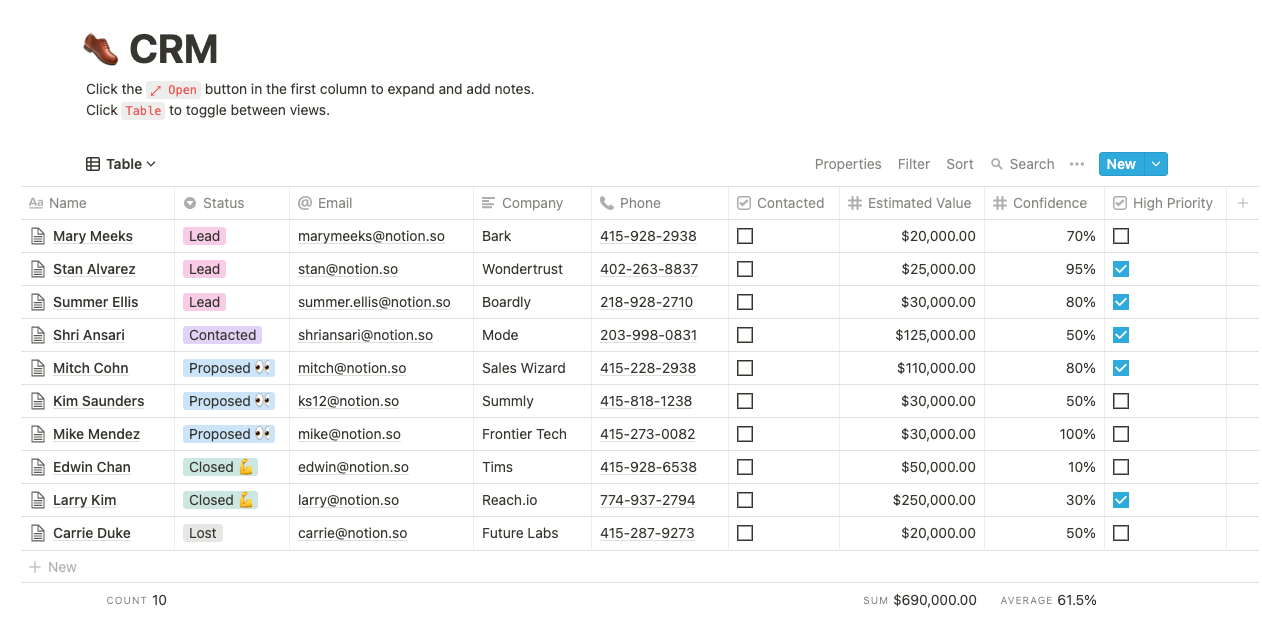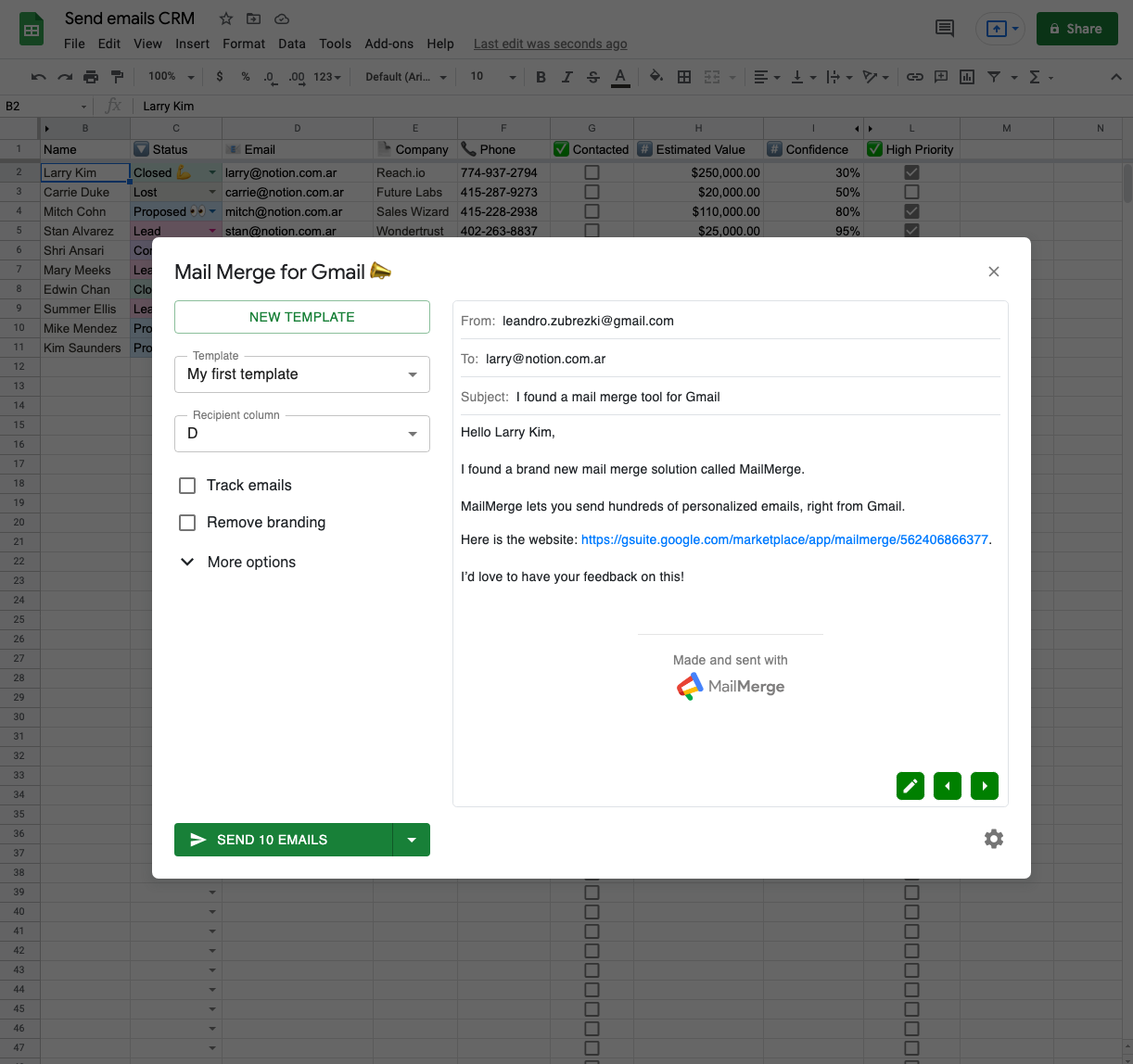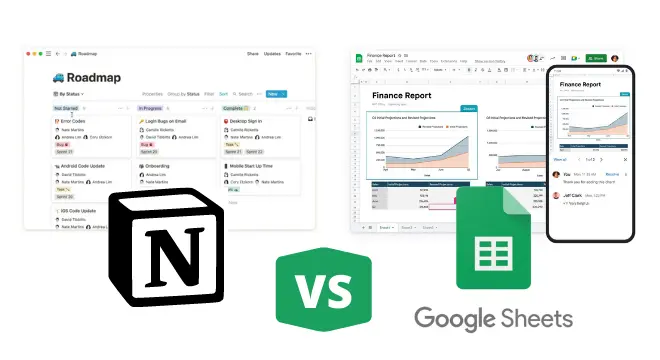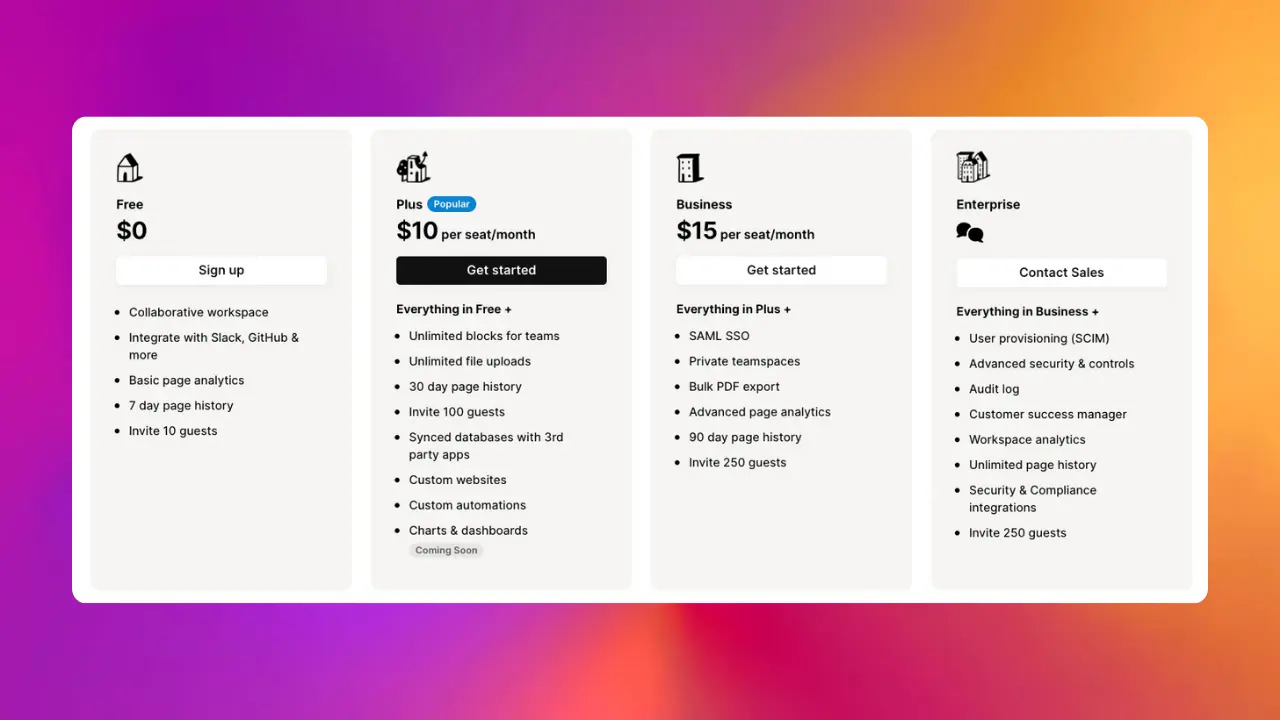Table of Contents
In this post, we’ll explore how to import a customer database into Google Sheets and then send emails in bulk to those customers using a third-party add-on.
We’ll also show the difference between importing the database using Sync2Sheets and using the built-in export option from Notion.
Choosing a CRM Template

For this tutorial, we will use Notion’s Sales CRM Template, which includes a database with some dummy data that will be helpful for following along. Go ahead and duplicate it into your Notion account to start.
If you already have a customer or leads database, you can skip this step and use your data.
We’d also like to mention the Advanced CRM | Notion template by aNotioneer, which includes additional databases and relationships between them. If you’re searching for a template that replicates the functionality of a CRM like Salesforce, you should check it out.
Importing the Database Into Google Sheets (2 Methods Compared)
Now that we have our database ready, it’s time to make it available in Google Sheets so we can send the emails. We have two options to complete this task:
- The Export > Markdown & CSV option, which you can access from the three dots menu in the Notion web app.
- The Sync2Sheets Google Workspace Add-On, which will keep the database in sync as you make changes and format the data to match Notion styles as much as possible. Using Sync2Sheets will also allow us to automatically mark in Notion which customers we have contacted already, as we will showcase at the end of the post.
You can see the difference between the two approaches in the following images:


Sync2Sheets has 3 different plans that range from $13 to $49 per month depending on your needs. For detailed instructions on how to use it, take a look at this 3-minute YouTube video:
Once the database is in sync, we will move some columns around and hide others to match the order in Notion:
Want to learn more? Check out this in-depth guide comparing the two methods.
Installing a Mail Merge Add-On to Send the Emails
The Google Workspace Marketplace is full of mail merge add-on options. The name “mail merge” comes from the fact that we will be using Gmail drafts as templates for our emails, so we will be “merging” our draft with the customer data we have in Google Sheets.

For this tutorial, we’ll use Mail Merge for Gmail, which allows us to send 2K emails per day for free. But you can use a different add-on if you prefer, such as Mergo or Yet Another Mail Merge. (As you can see by the name of that last add-on, there are plenty of options to choose from).
Using Mail Merge to Send the Emails
At this stage, you should have your list of customers in Google Sheets and the Mail Merge for Gmail add-on installed. Go ahead and open it from the Add-ons menu in your spreadsheet and select Start to open it.
Mail Merge comes with a default template that you can use to test the tool. But first, let’s make a small adjustment to our customer list. Rename 🔖 Name to just Name so we can use it to populate our template correctly. You should now see the name of the customer and their corresponding email in the draft.

You can now click SEND 10 EMAILS to send them, but resist the temptation — we don’t want to spam Notion employees with invitations to install Mail Merge! Instead, you can test your template by clicking the arrow button to the right of SEND 10 EMAILS and selecting Receive a test email.
As we mentioned, Mail Merge for Gmail is only one of many options. We recommend you explore the Marketplace and choose the mail merge add-on that best suits your needs. Some allow you to do advanced things like create campaigns, track opens, and more.
Marking Your Customers as Contacted and Updating Your Notion Database
To mark each of our customers as contacted, we will use a Sync2Sheets feature called editable columns. Editable columns allow you to make a Sheets to Notion connection for a specific column, enabling the usage of spreadsheet formulas and more to automatically update the corresponding Notion database.
Conclusion
The post explored two ways of importing a Notion database into Google Sheets: CSV export and Sync2Sheets. We also reviewed different add-ons to send emails and how to sync data back to Notion using editable columns.
What’s your favorite mail merge add-on for Google Sheets? And how do you use it in your marketing or sales workflow? Share your thoughts with us on X!




